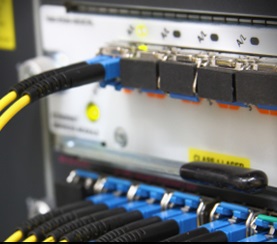
Ah, the IBM Mainframe. Anyone who knows anything about IT has heard of the mainframe. It was first developed for the centralized computer market as a big computer that could process big data. It sounds simple enough, but the evolution of this hardware has changed the way companies are doing business in today’s complex markets, and will continue to change the way companies conduct business in the future. Let’s take a look at where the mainframe has been, and where it’s going. And, most importantly, how this applies to the modern business environment. I know you’ve heard the phrase, “death of the mainframe”, but that is far from true. Trust us; you’ll want to take note.
Brief History of the Mainframe
In 1964, IBM introduced the System/360, revolutionizing the IT industry with its ability to consolidate workloads and allow customers to house all of their data and applications in a single system. From there, IBM has made continuous improvements to the mainframe, releasing each consecutive new series throughout the decades, with the most recent version being the z Systems. As continuous improvements were made, consumers saw increased capabilities in workloads, security, and processing. Consequently, mainframes have been established as the fastest, most reliable, and secure systems for high-volume workloads.
Mainframes: Then and Now
It’s important to note how mainframes are currently being used differently by businesses than they were in the past, and this can be attributed to the advancements in available technology as well as the ever-changing and growing needs of businesses.
In the 60’s, 70’s, and even 80’s, mainframes were really only utilized in one way because it was the only IT solution for businesses needing to efficiently process larger data loads. Since the demand was so extreme, it caused a 2+ year wait to receive a mainframe, leading businesses to get desperate and use smaller companies with smaller computers to try to fulfill their needs until they could receive theirs. This caused major headaches for companies who found they would need thousands of servers to achieve what a mainframe does, causing their IT environments to become too complex.
Presently, mainframes are still being used because businesses have found them to be the most effective at meeting their needs while also remaining a relatively simple solution, though other solutions do now exist in the modern IT environment. Companies can be found using them strategically to write new programs, though it is rare. Most commonly, companies are currently using them to run their critical workloads without making new investments in the actual mainframe, since the modern versions are still fully compatible with earlier ones. You will also see companies utilizing a multitude of distributed computers alongside their mainframe, or a combination of new technology and the mainframe . Some companies are trying to get off the mainframe, but majority find they can never get alternative platforms to work correctly when they start the migration process.
Mainframes in the Future
With mainframes still being used by businesses today, what can CIOs expect in the future? With advancing technology, mainframes are now running at the speed and scale of mobile, while also ensuring the highest level of security and trust in the cloud. We know that technology will continue to advance in the future, improving upon even present capabilities. We also know that workers are aging, and those IT professionals that are fully trained in mainframe support and operations are looking towards retirement. With a lack of new workers trained on the mainframe, this poses a problem for companies. We’ve seen that migrating off is usually a less than successful endeavor, leaving companies needing to continue to maintain their IT environment without the capable IT support to do so. Additionally, mainframes are seen as a large investment for companies, leading towards large capital expenditures causing some CIOs to shy away from this solution. There’s a fear that exists among many IT decision makers, but the future is inevitable: outsourcing the mainframe.
Outsourcing is the future for mainframes, and businesses would benefit from doing so. CIOs – take note; by outsourcing, you can take advantage of provider economies of scale, leading to cheaper software pricing and a smaller overall capital expenditure. Equally important, outsourcing ensures your mainframe can be maintained by those properly trained in mainframe support and operations, leaving you free of worry regarding its day to day operations or unsuccessfully trying to hire someone who is comparable to your soon-to-retire IT employee. Whether you are currently using the mainframe to write new programs, maintain critical workloads, or you’re looking to migrate off, outsourcing can apply to all scenarios. You should choose either to outsource some functions, or all functions, depending on what will work the best strategically for your business.
Even with all of the changes in usage, capability, and application alongside the additions of new technology in the marketplace that have occurred since the IBM Mainframe’s inception, we can all agree that the mainframe isn’t going anywhere. Businesses need to stay on the mainframe, but for the future need to look at outsourcing to ensure proper support and operation as support workers retire, and to take advantage of better provider economies of scale to reduce capital investments.

